From pickups to sports cars, Chevy’s 235 engine has powered some of the most iconic models ever made. We review this legendary engine’s history, specs and reliability.
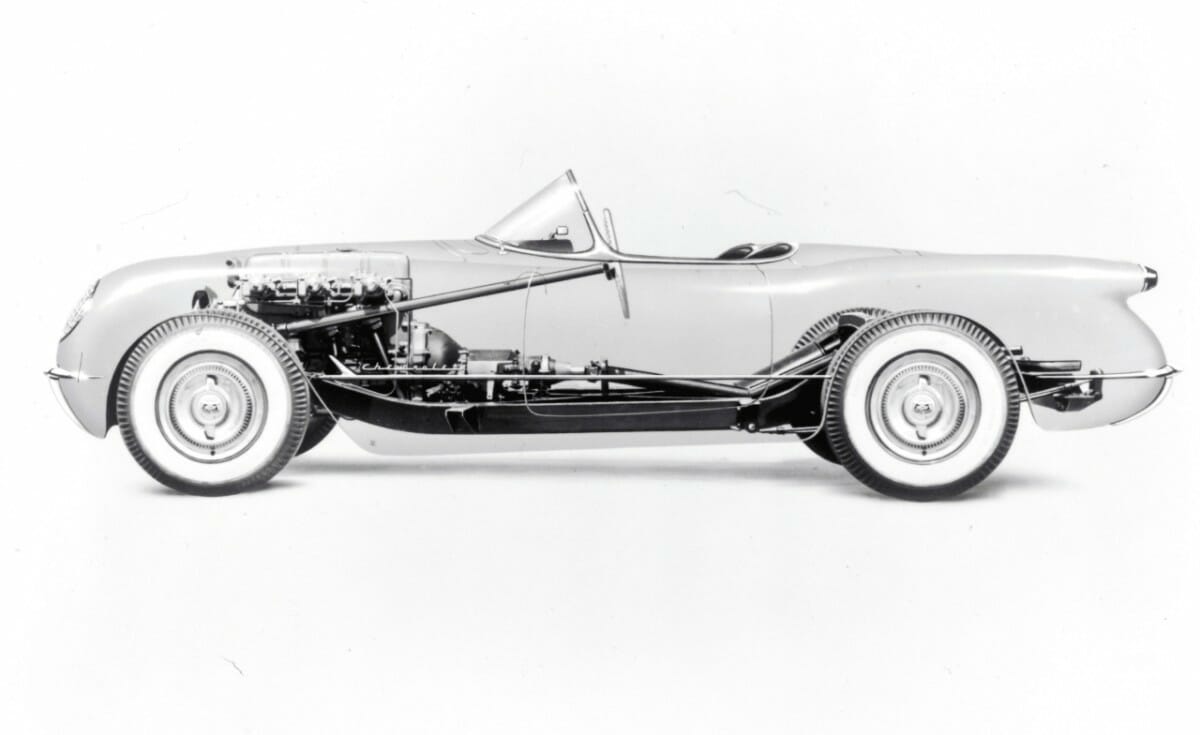
Car enthusiasts all have their favorite engine, from a thumping V8 to a high-revving four-cylinder. One of the more popular engine layouts is undoubtedly the inline six-cylinder. These engines are regarded for their balance, reliability, and ease of repair due to their layout.
When it comes to inline six-cylinder engines, your mind jumps to the famous Toyota 2JZ-GTE or any selection of BMW powerplants. Still, one engine has an incredible history spanning 70 years of use. The Chevy 235 engine only came in GM vehicles from 1941 to 1962 but was a part of the long-standing development cycle for Chevy’s straight-six engine platform.
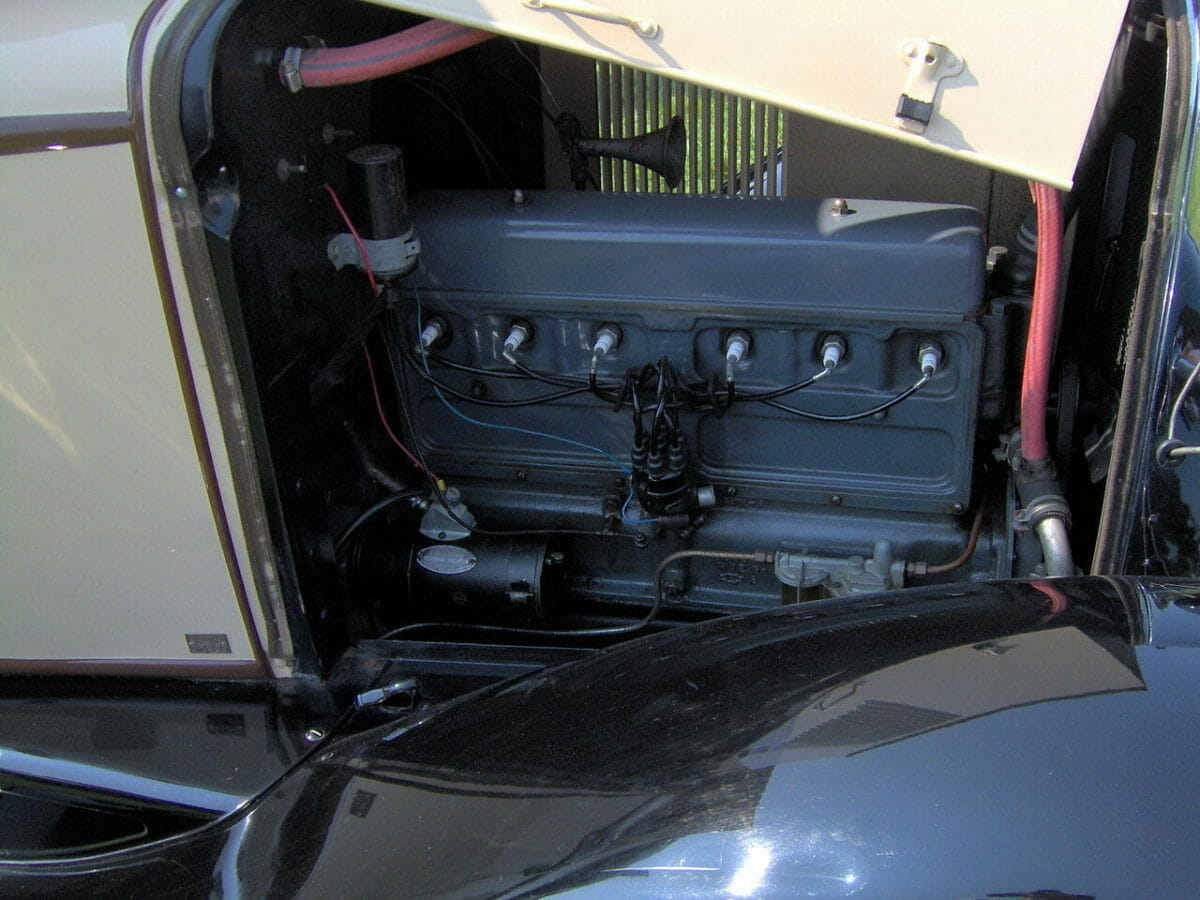
Stovebolt Six’ Engine: Where it All Started
The year 1929 marked the introduction of a new power plant from Chevy. After Chevy replaced its valve-in-head four-cylinder, the new 194 cubic inch overhead-valve six-cylinder was used in all passenger cars from 1929 to 1934.
Starting in 1935, Chevrolet and GMC shared the platform for all truck models.
These engines produced about 50 horsepower, with later versions producing up to 80 horsepower. Early versions of the engine were given the “Stovebolt” nickname due to the bolts used resembling that of wood stove hardware.
Although Chevy’s implementation of the six-cylinder garnered good reviews, it was time to update the powerplant.
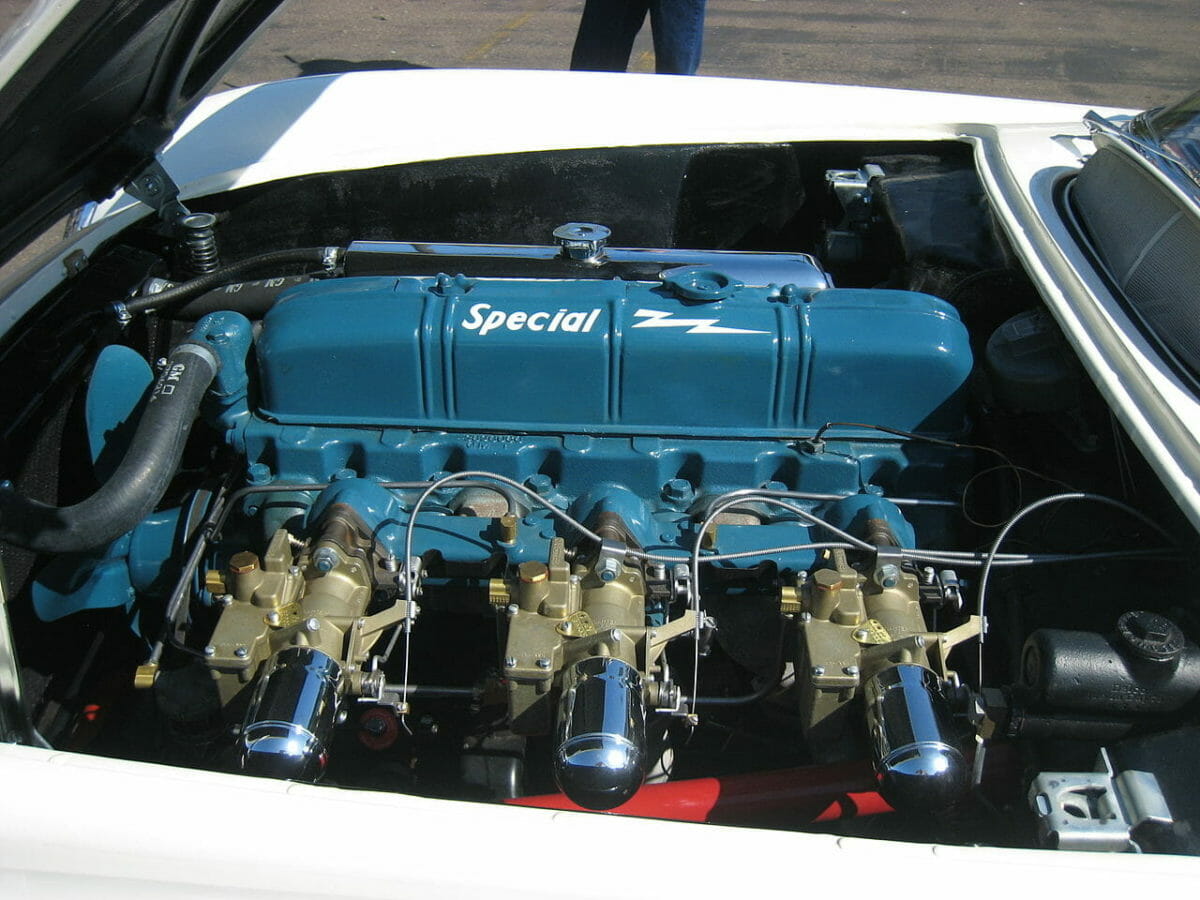
Chevy’s 2nd-gen. Straight-6: Birth of the Blue Flame
Chevy upped the ante in 1937, releasing the newly designed 216 cubic-inch Chevy inline six-cylinder. Sharing the same platform as previous generations, Chevy beefed up the 216 with more displacement (3.5L), four-bearing crankshaft, and a higher compression ratio. The straight-six engine now made 85 horsepower.
With the addition of a new cylinder head in 1941, output was increased to 90 horsepower. Nearly double the power of the original straight-six engine. 1941 also saw the release of a 235 cubic inch variant of the six-cylinder for use in trucks. Just nine years later, Chevy decided to complement their new PowerGlide transmissions with the 235 cubic inch engines and stuff the whole package into their cars.
For 1953 Chevy’s passenger cars saw the use of two different six-cylinder engine variants. First of those being the “Thrift-King” attached to a manual transmission and making 123 horsepower. Second, the infamous “Blue Flame” attached to the PowerGlide and making 136 horsepower. 1953 was also the first year of the Chevy Corvette.
Corvettes received a combo of higher compression, mechanical lifters, and triple side-draft carburetors to push the “Blue Flame” 235 engine over 150 horsepower. To think that Chevy had tripled the output of this simple design in just over 20 years is astonishing.
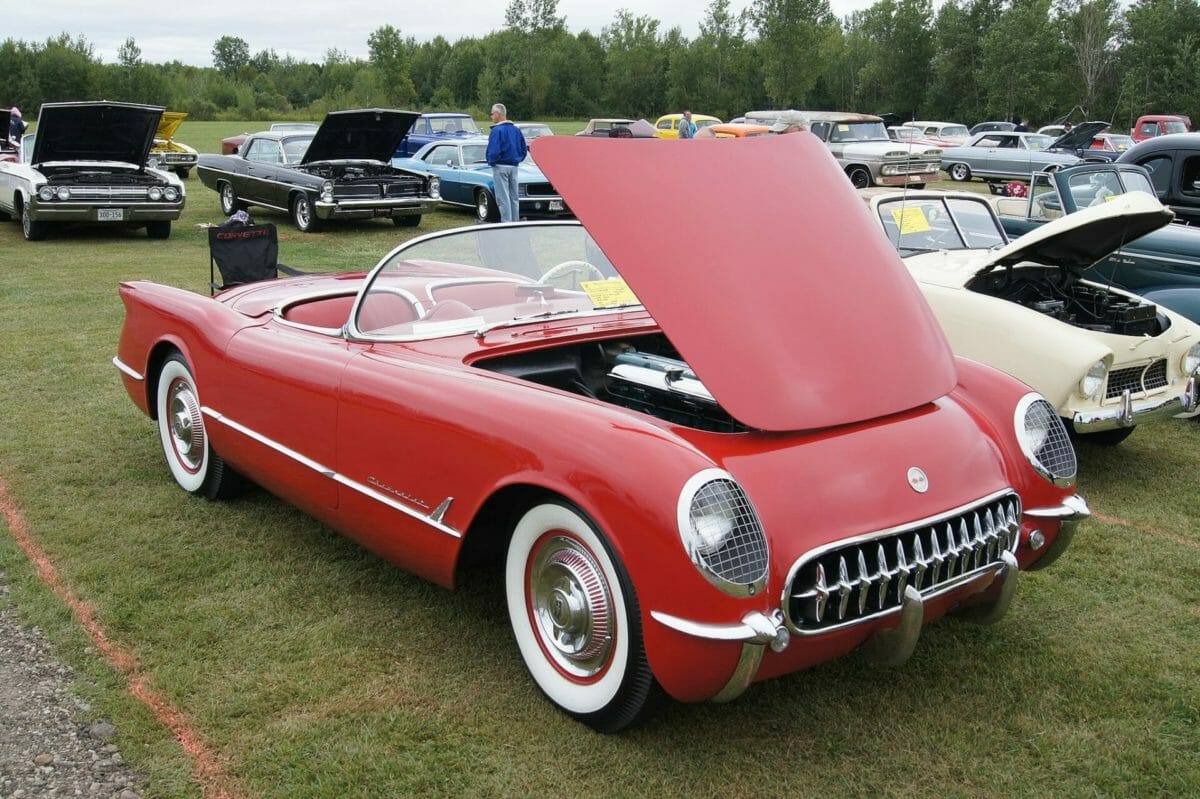
Which Models Have the Chevy 235?
Most famously, the original Corvette carried the 235 from 1953 to 1956. Chevy also crammed the 235 in every truck from 1954 to 1962. Although it is, in theory, a brief run of models to find these engines, they have a cult following if you need help sourcing one.
The Chevy 235 can also be found in most GMC trucks spanning from 1950 to 1955. At the time, Chevy had to compete with other sports cars like the Nash Healey. The Healey had its own inline six-cylinder, which put out 140 horsepower. Other competitors like the Cunnigham and Packard Caribbean used V8 platforms to propel them into the 200 horsepower range.
While the likes of Packard and Nash were churning out slightly higher power figures, the Corvette set itself apart with overall reliability. The 235 engine’s reliability over other platforms stems from Chevrolet’s long-standing history compared to the competition.
There is a reason Nash and Packard aren’t still producing vehicles. Keeping an eye out for the Chevrolet or GMC trucks specifically is your best bet in finding a 235 engine to help you with your restoration.
When on the hunt for a 235 engine, it is best to look out for a “Blue Flame” Corvette variant, as these are considered the best iteration of the legendary platform.
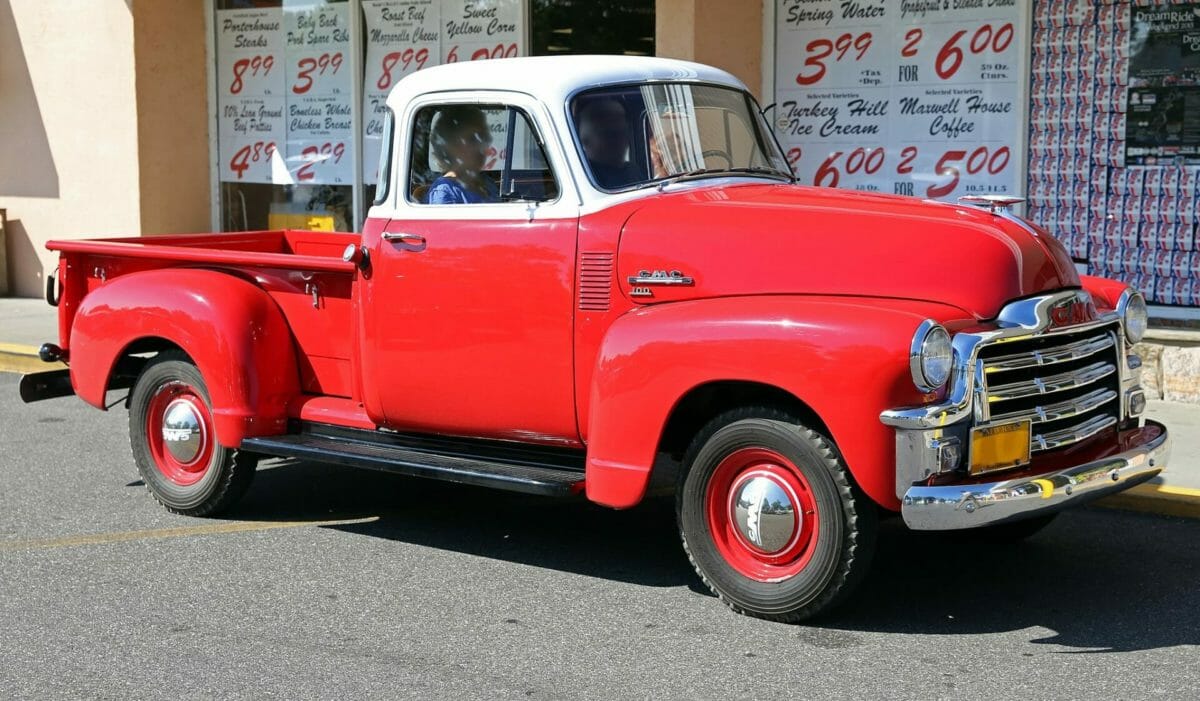
Why is the Chevy 235 Engine So Popular?
While the Chevy 235 is nothing to pay a second look at in terms of performance, durability is its selling point. Chevy 235 engines are known to last well over 50 years if taken care of properly. At this point, finding a “Blue Flame” engine in the wild isn’t necessarily easy, but it should come as no surprise examples are kicking around.
Many Chevy 235 engines have been used as restoration bases in Corvettes over the years. This sought-after engine, unfortunately, drives the prices up every time they get used in lifelong projects.
Compared to other famous inline six-cylinder engines, pricing isn’t too bad at $1000 for a complete engine. At the same time, you have to keep in mind they are 50-year-old platforms and will require a complete rebuild.
Chevy produced the 235 engine as just another upgrade to their original inline six-cylinder. Impressively the 235 had 13.7 combined miles per gallon, which for 1953 is unheard of in a sports car.
Truck variants didn’t get quite as good of mileage, sitting at 11.5 combined. Many die-hard enthusiasts today would argue it is one of the most significant engines Chevy has ever produced.
The main reason for this is the overall smoothness of an inline six-cylinder. An inline six-cylinder engine’s smooth feel comes from its paralleled intake and exhaust pulses, creating even forces across the engine.
Less vibration, less shaking, more power all result in the longevity of bearings and other engine components. The longevity of these engines is what gave them their status, after all.
Overall, many old-school Chevy enthusiasts love the inline six-cylinder platform for the reasons mentioned above, even though there are other legendary Chevy engines to choose from. Something about being a die-hard old-school fan is very endearing.
Having the strong will to keep the original sub 200 horsepower six-cylinder over a newly built V8 LS engine or a classy 350 V8 can only be understood by those who truly love their cars for what they are. These enthusiasts are why the 235 engine is still being talked about today.
Photos: Chevrolet; Wikipedia/Wiki Commons